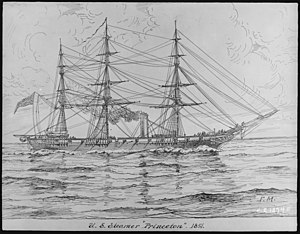
USS Monitor was an ironclad warship built for the United States Navy during the American Civil War and completed in early 1862, the first such ship commissioned by the Navy. Monitor played a central role in the Battle of Hampton Roads on 9 March under the command of Lieutenant John L. Worden, where she fought the casemate ironclad CSS Virginia to a stalemate. The design of the ship was distinguished by its revolving turret, which was designed by American inventor Theodore Timby; it was quickly duplicated and established the monitor class and type of armored warship built for the American Navy over the next several decades.

John Ericsson was a Swedish-American inventor. He was active in England and the United States.

Maine was a United States Navy ship that sank in Havana Harbor on February 15, 1898, contributing to the outbreak of the Spanish–American War in April. U.S. newspapers, engaging in yellow journalism to boost circulation, claimed that the Spanish were responsible for the ship's destruction. The phrase, "Remember the Maine! To hell with Spain!" became a rallying cry for action. Although the Maine explosion was not a direct cause, it served as a catalyst that accelerated the events leading up to the war.

The fourth USS Princeton (CVL-23) was a United States Navy Independence-class light aircraft carrier active in the Pacific Ocean during World War II. She was launched in 1942 and lost at the Battle of Leyte Gulf in 1944.

Steam frigates and the smaller steam corvettes, steam sloops, steam gunboats and steam schooners, were steam-powered warships that were not meant to stand in the line of battle. The first such ships were paddle steamers. Later on the invention of screw propulsion enabled construction of screw-powered versions of the traditional frigates, corvettes, sloops and gunboats.

Robert Field Stockton was a United States Navy commodore, notable in the capture of California during the Mexican–American War. He was a naval innovator and an early advocate for a propeller-driven, steam-powered navy. Stockton was from a notable political family and also served as a U.S. senator from New Jersey.
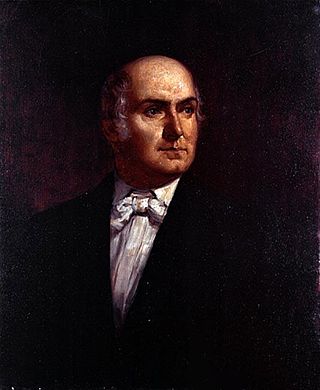
Abel Parker Upshur was an American lawyer, planter, judge, and politician from the Eastern Shore of Virginia. Active in Virginia state politics for decades, with a brother and a nephew who became distinguished U.S. Navy officers, Judge Upshur left the Virginia bench to become the Secretary of the Navy and Secretary of State during the administration of President John Tyler, a fellow Virginian. He negotiated the treaty that led to the 1845 Texas annexation to the United States and helped ensure that it was admitted as a slave state. Upshur died on February 28, 1844, when a gun on the warship USS Princeton exploded during a demonstration.
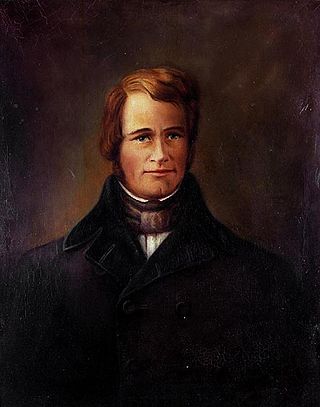
Thomas Walker Gilmer was an American statesman. He served in several political positions in Virginia, including election as the 28th Governor of Virginia. Gilmer's final political office was as the 15th Secretary of the Navy, but he died in an accident ten days after assuming that position.

David Henshaw, son of Captain David Henshaw and Mary Sargent, was the 14th United States Secretary of the Navy.

The Pacific Squadron was part of the United States Navy squadron stationed in the Pacific Ocean in the 19th and early 20th centuries. Initially with no United States ports in the Pacific, they operated out of storeships which provided naval supplies and purchased food and obtained water from local ports of call in the Hawaiian Islands and towns on the Pacific Coast. Throughout the history of the Pacific Squadron, American ships fought against several enemies. Over one-half of the United States Navy would be sent to join the Pacific Squadron during the Mexican–American War. During the American Civil War, the squadron was reduced in size when its vessels were reassigned to Atlantic duty. When the Civil War was over, the squadron was reinforced again until being disbanded just after the turn of the 20th century.
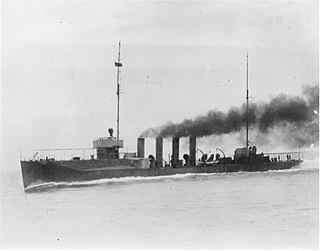
The O'Brien class of destroyers was a class of six ships designed by and built for the United States Navy shortly before the United States entered World War I. The O'Brien class was the third of five classes of destroyers that were known as the "thousand tonners", because they were the first U.S. destroyers over 1,000 long tons (1,016 t) displacement.

USS Ericsson was an O'Brien-class destroyer built for the United States Navy prior to the American entry into World War I. The ship was the second U.S. Navy vessel named in honor of John Ericsson, the Swedish-born builder of the ironclad warship USS Monitor during the American Civil War.
Commodore John Thomas Newton was an officer in the United States Navy who commanded several ships over a period of decades, undertaking missions in the Caribbean and leading the first crossing of the Atlantic by an American steam-powered warship. He was court-martialed following a fire that destroyed that vessel, but his suspension from service was remitted by President John Tyler, after which Newton commanded Pensacola Navy Yard and the Home Squadron for periods. He died while serving in his last post as president of a Naval Court of Inquiry.

The Stevens Battery was an early design for a type of ironclad, proposed for use by the United States Navy before the American Civil War. One full-sized example was begun but never completed due to lack of funding.
David Gardiner was an American lawyer and politician who served as a member of New York State Senate from 1824 to 1828. He was the father of Julia Gardiner Tyler, second wife of U.S. President John Tyler. He died in an explosion aboard the USS Princeton.
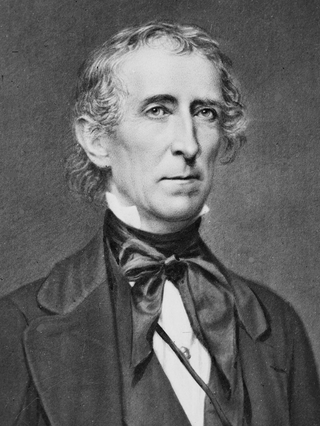
The presidency of John Tyler began on April 4, 1841, when John Tyler became President of the United States upon the death of President William Henry Harrison, and ended on March 4, 1845. He had been Vice President of the United States for only 31 days when he assumed the presidency. The tenth United States president, he was the first to succeed to the office intra-term without being elected to it. To forestall constitutional uncertainty, Tyler took the presidential oath of office on April 6, assumed full presidential powers, and served out the balance of Harrison's four-year term, a precedent that would govern future extraordinary successions and eventually become codified in the Twenty-fifth Amendment.

The first Missouri, a 10-gun side-wheel frigate, one of the first steam warships in the United States Navy.
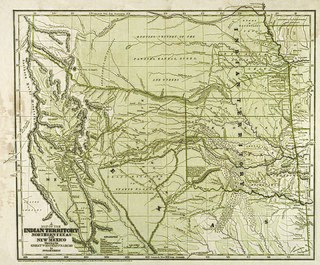
Events from the year 1844 in the United States.

Beverley Kennon was a career officer in the United States Navy who attained the rank of captain as head of the Bureau of Construction and Repair. He died as a result of the explosion aboard USS Princeton.
